A ketogenic diet focuses on supplying the body with dietary fats as a source of energy versus relying upon high amounts of carbohydrates. This type of diet can provide certain therapeutic benefits.
Many pet parents are unaware of the therapeutic benefits that ketogenic diets can provide to a pet who is fighting cancer or suffering with epilepsy. There are many ways to feed a ketogenic diet – including raw or cooked. Additionally, a keto diet can be home prepared or commercially purchased.
Epilepsy & Cancer
The ketogenic diet originated for epilepsy in humans. It has been adopted as a therapeutic feeding method for pets with epilepsy or cancer.
Ketogenic Diet Overview
Keto diets have a particular impact on metabolic systems. This requires an understanding of how the diet works in order to achieve desired benefits for disease.
Ketogenic Diet Selection
There are many different ways to feed a ketogenic diet. The type of keto should be selected based on the desired therapeutic benefits.
Ketogenic Ingredients
Ketogenic diets involve specific ingredients in order to achieve the ideal ratio of fat to protein. This ratio will differ based on the type of keto diet selected.
Professional Guidance is Recommended
Ketogenic diets can have multiple nutritional deficiencies due to the high fat content. This often requires supplementation and careful calculations to prevent long term nutritional deficiencies.
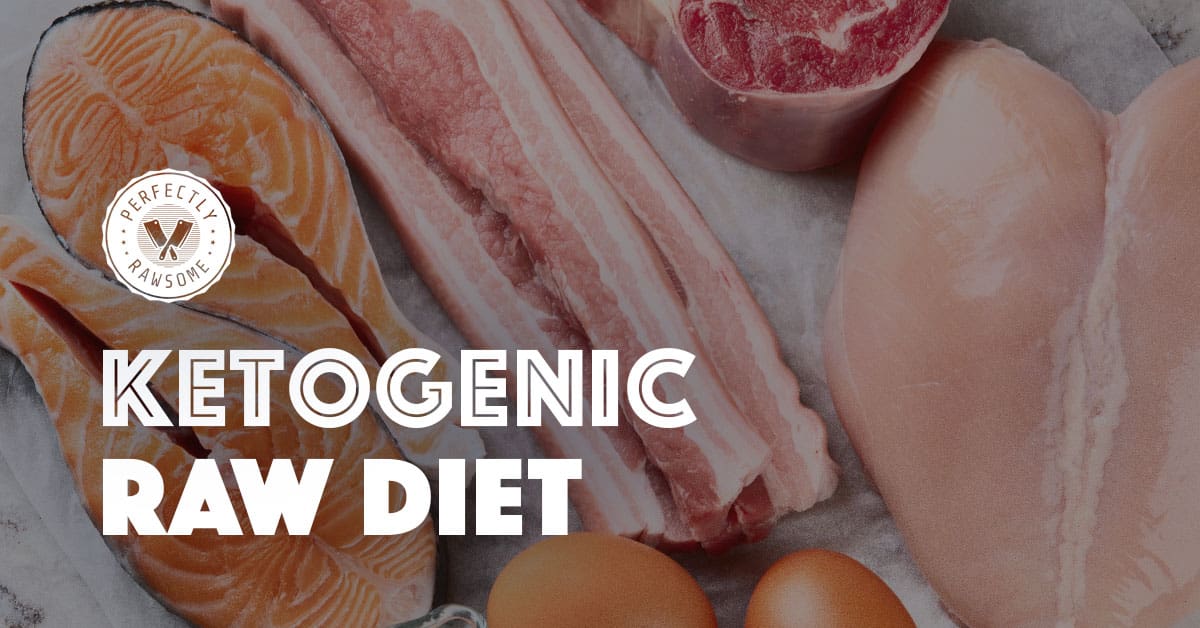
Epilepsy & Cancer
The ketogenic diet shines as a beneficial and therapeutic option for two major diseases – Epilepsy and Cancer. Each of these diseases are unique in their medical treatment protocols. A ketogenic diet will not reverse or cure these diseases; however, it is a useful tool to improve the quality of life in conjunction with medical treatment.
Canine & Feline Epilepsy
Epilepsy in pets and humans is a neurological disease involving seizures which are caused by a surge of uncontrolled and abnormal brain activity. Seizures can be debilitating and potentially life threatening. Symptoms can range from barely noticeable signs such as twitching, rapid blinking, staring into space (Petit Mal or Focal seizures); to more dramatic effects such as loss of consciousness and muscle or body jerks and spasms (Grand Mal seizures).
Ketogenic diets have been used in humans to help control intractable epilepsy since the 1920s. Intractable epilepsy refers to seizure activity that is resistant or not fully controlled by medications. A ketogenic diet can be used in pets with epilepsy with similar results to humans, although the diet is not intended to replace medications.
The Cancer Epidemic
Unfortunately, cancer is the leading cause of death in pets. Both humans and pets can suffer from similar types of cancer. According to the Veterinary Cancer Society, there are up to 100 types of animal cancer, which include skin, head and neck, bone, lymphoma, and abdominal tumors. The words “tumor” or “mass” are commonly used when referring to the appearance of a neoplasm.
Neoplasms can either be benign or malignant. With benign neoplasms, this means the neoplasms are not spreading throughout the body and are growing at a slow pace. However, malignant neoplasms grow rapidly and unpredictably and spread throughout the entire body. Malignant neoplasms are truly the only type that is cancerous.
Cancer cells can feed and grow with a diet high in sugar (glucose). Eliminating sugar from the diet has been observed as beneficial when feeding a pet with cancer. Commercialized dry and canned pet food is very high in sugar (provided through high amounts of carbohydrates) whereas a home prepared diet can easily eliminate the inclusion of carbohydrates.
Ketogenic Diet Overview
Even a traditional homemade diet that is low in carbohydrates is an improvement for pets with cancer or epilepsy. However, a homemade diet can be specialized to be ketogenic. This provides dietary support to aid in the reduction of seizure occurrence and to slow the progression of tumor growth.
A ketogenic diet, or keto for short, is high in fat, moderate in protein, and provides 0% to 1% carbohydrates on an As Fed basis. The goal of a keto diet is to switch the body’s natural energy source from carbohydrates to fatty acids. This diet works because the growth rate of certain cancerous tumors slows down when the glucose supply is eliminated and the body is provided with fatty acids instead. The science behind this feeding regime in conjunction with medical treatment is new but shows great promise for improving the quality of life in both humans and dogs.
The Keto diet is named for the ketones that the body produces when relying exclusively on fatty acids as an energy source. Ketones are an alternative fuel source for the body that is metabolized in the liver from the breakdown of fatty acids. They are used as an energy source throughout the body, including within the brain, when blood sugar (glucose) is in short supply.
Benefits for Epilepsy
The effectiveness of ketogenic diets for reducing and controlling seizure activity has been well observed in humans. However, scientific understanding of how the diet works to accomplish this is incomplete. There are several theories:
Anticonvulsant Effects of Ketone Bodies
Whether ketone bodies themselves provide anticonvulsant effects is controversial. Some studies have found no relationship between ketone bodies and seizure control, while others have shown inhibitory effects of ketone bodies on metabolic pathways that are involved in seizure activity.
Neuronal Metabolism Changes
During sudden high intensity exercise such as sprinting, the body's muscles rely on glucose for energy that is stored in the body for immediate use. During beneficial ketosis induced by fasting and/or ketogenic diets, glucose is reduced and the body switches to using ketones for energy. While the usual substrate for neurons in the brain is also glucose, this changes to ketones when the body is in ketosis as well. This could be one mechanism for reducing seizure activity. It stands to reason that if glucose is required for sudden muscle and brain activity, that reducing glucose also reduces the neuron’s and muscle’s ability for uncontrolled activity and reduces the synapses’ excitability.
Neurotransmitter Function
Ketone metabolism may also play a role in synaptic stabilization by creating changes in the levels of certain key amino acids. These amino acids, such as gamma-aminobutyric acid, act as neurotransmitters.
Benefits for Cancer
Otto Warburg was a cell biologist who led to the discovery that cancer cells use energy from glucose fermentation and are unable to flourish with energy from cellular respiration. Dr. Thomas Seyfried and other cancer researchers agree, and have further discovered that cancer cells are also fueled from the fermentation of the amino acid glutamine.
Cancer cells are unlike normal cells in many ways, but one of their unique traits regards their insulin receptors. They have ten times more insulin receptors on their surface than normal cells. This enables cancer cells to gorge themselves on glucose and nutrients coming from the bloodstream at a very high rate. When starchy carbohydrates (glucose) is consumed as the primary energy source, cancer cells can continue to thrive and spread. It is no surprise that the lowest survival rate in cancer patients is among those with the highest blood sugar levels.
Carnivores like dogs and cats are equipped to digest and metabolize fat into energy. When fat is used as the primary energy source to create a state of ketosis, cancer cells are essentially “starved” while normal cells are not. A raw diet naturally lends itself well to creating a ketogenic diet. The ratio of fat to protein in ketogenic diets depends on the type of keto that is being formulated.
Types of Ketogenic Diets
There are multiple types of ketogenic diets. However, the consistent factor is that each ketogenic diet is higher in fat in comparison to traditional homemade diets. Each ketogenic diet provides their own benefits that can be utilized in a therapeutic diet protocol.
Keto 1:1
A keto 1:1 raw diet requires a one to one ratio of fat to protein. The 1:1 ketogenic ratio refers to a diet with the same amount of calories from fat in comparison to protein and net carbohydrates combined. It is much easier to nutritionally balance 1:1 keto diets in comparison to the higher keto levels. A balanced 1:1 ketogenic diet is typically recommended as a maintenance diet once cancer is in remission, or rotated with higher fat ketogenic diets.
Keto 2:1
A keto 2:1 raw diet requires a two to one ratio of fat to protein. The 2:1 ketogenic ratio refers to a diet with twice the amount of calories from fat in comparison to protein and net carbohydrates combined. This can help achieve a healthy metabolic state called ketosis which begins usually three to four days after removing carbohydrates from the diet.
When pets are struggling with active cancer, a Keto 2:1 diet can be chosen for dietary support. Due to the high amount of fat, Keto 2:1 can be difficult to nutritionally balance for long term feeding unless nutritional supplements are included to account for the deficiencies present. Therefore, it is primarily used short term for active cancer cases. However, 2:1 keto should only be considered when other protocols are implemented, such as daily ketone testing and intermittent fasting.
Keto 3:1 or higher
A keto 3:1 raw diet requires a three to one ratio of fat to protein. The 3:1 ketogenic ratio refers to a diet with three times the amount of calories from fat in comparison to protein and net carbohydrates combined. This can help achieve a healthy metabolic state called ketosis which begins usually three to four days after removing carbohydrates from the diet.
A 3:1 keto diet or higher is typically utilized to aid in epileptic seizure control. Due to the extremely high amount of fat, Keto 3:1 is difficult to nutritionally balance for long term feeding and this type of diet is only recommended for pets that experience a high seizure frequency. Additionally, 3:1 or 4:1 keto should be worked up to slowly.
Diets that are this high in fat may risk amino acid and other nutrient deficiencies if not carefully formulated and heavily supplemented. Therefore, guidance from a qualified canine nutritionist is strongly recommended in these cases.
Ketogenic Diet Selection
The type of keto diet to choose depends on the stage of disease and the approach to therapy. There are several factors to consider when choosing a keto diet:
Blood Testing for Ketones
A ketogenic diet will not automatically put the body into ketosis. Intermittent fasting and daily blood testing for ketones are important elements in achieving ketosis when feeding a 2:1 ketogenic diet.
Testing will require a blood glucose meter. The pet will need to be pricked on a daily basis to check for blood ketones. If a pet owner does not plan to do this testing, then it is recommended to only feed a traditional home prepared diet or a 1:1 ketogenic diet. It is only recommended to feed a 2:1 (or higher) keto diet to dogs who are going to have their ketones monitored.
Bile Vomiting
Ketosis is achieved with intermittent fasting which requires a 12 to 16 hour fasting period in between meals. This means feeding once a day, or twice a day in very close proximity. If this is not possible due to bile vomiting or the need to provide medication 2-3x a day, then intermittent fasting is not possible. Therefore a 2:1 (or higher) ketogenic diet is not recommended if a 12 to 16 hour fasting period cannot be provided.
Medical Contraindications
Certain pre-existing medical conditions may also prevent the use of a ketogenic diet. Conditions such as pancreatitis and digestive diseases require a diet that is low in fat. Therefore, the dietary requirements for these types of medical conditions conflict with the high fat levels in keto diets. Additionally, some dogs without pre-existing conditions do not tolerate the high levels of fat in ketogenic diets.
Nutrient Deficiencies
If Keto 2:1 or 3:1 is chosen for therapeutic support, it is important to ensure that the diet does not cause nutritional deficiencies. It is often recommended to rotate higher keto levels with a balanced 1:1 keto diet in 4 month intervals. If this is not possible, supplementation is required to avoid nutritional deficiencies with long term feeding. It is important to ensure that any supplementation is carefully formulated as general multivitamins will not suffice.
Keto Ingredients
The recommended macronutrients for ketogenic diets can be achieved by feeding ingredients found at local supermarkets. It is ideal to select pasture-raised or wild game ingredients when possible. The difference between grass-fed livestock and wild game in contrast to factory-farmed livestock is in the amount of omega-3 polyunsaturated fatty acids found within their meat. Grass-fed and wild game have more omega-3 essential fatty acids compared to omega-6 fatty acids which help fight against inflammation.
However, it is not required to use pasture-raised or wild game meats in a raw keto diet. Fatty acids in ketogenic diets that rely upon factory farmed meat can be balanced with the inclusion of fish oil. Any fats or fatty meats fed to pets should always be given raw or cold pressed and never cooked or rendered.
Fat
The primary source of energy and calories in keto diets are from fat. There are three different types of fats including monounsaturated, polyunsaturated, and saturated fats. Rotating fat sources is recommended to prevent the dog or cat from developing a taste aversion to one particular fat source.
Pure fat sources are ideal to use to fulfill the fat macro recommendations. Animal-based fats, such as pork belly and jowls, provide high amounts of fat but also include small amounts of protein. Plant-based fats, such as nuts and seeds, provide healthy fats in addition to carbohydrates.

Clarified Butter, Ghee
Saturated Fat
1oz (28g) = 255kcal
Fat: 28.35g
Protein: 0g
Carbohydrates: 0g



Grass Fed Butter
Saturated Fat
1oz (28g) = 200kcal
Fat: 22.8g
Protein: 0g
Carbohydrates: 0g

Pork Jowls
Saturated Fat
1oz (28g) = 186kcal
Fat: 19.73g
Protein: 1.81g
Carbohydrates: 0g
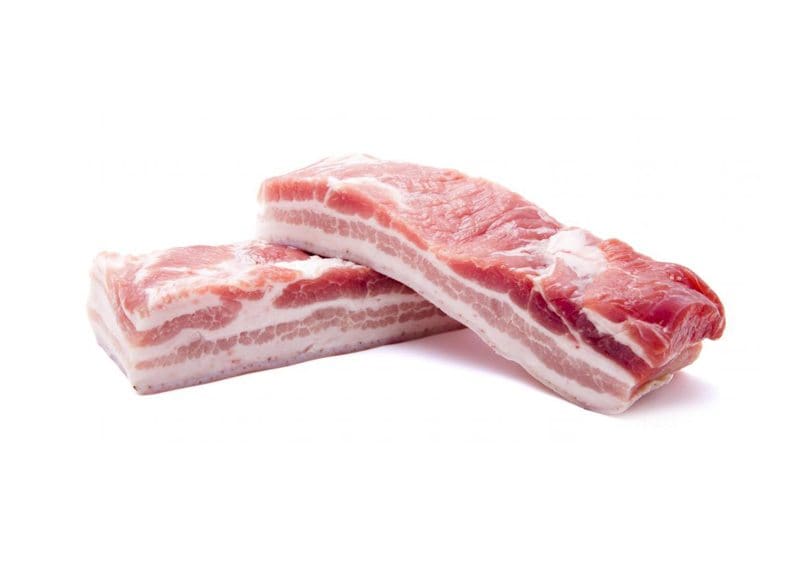
Protein
Moderating protein in ketogenic raw diets is important. Fatty cuts of meat are ideal for keto raw diets to moderate protein levels. Ground meat products are often used because the meat and fat are evenly distributed. However, whole meats can be fed. Higher fat muscle meats are ideal in keto diets. If lean proteins are used then adding additional fats will be necessary.
Organs can be used to contribute to the protein macro recommendations as well as provide beneficial vitamins and minerals. However, organs are high in protein and low in fat and should be fed in small amounts not to overdo protein.
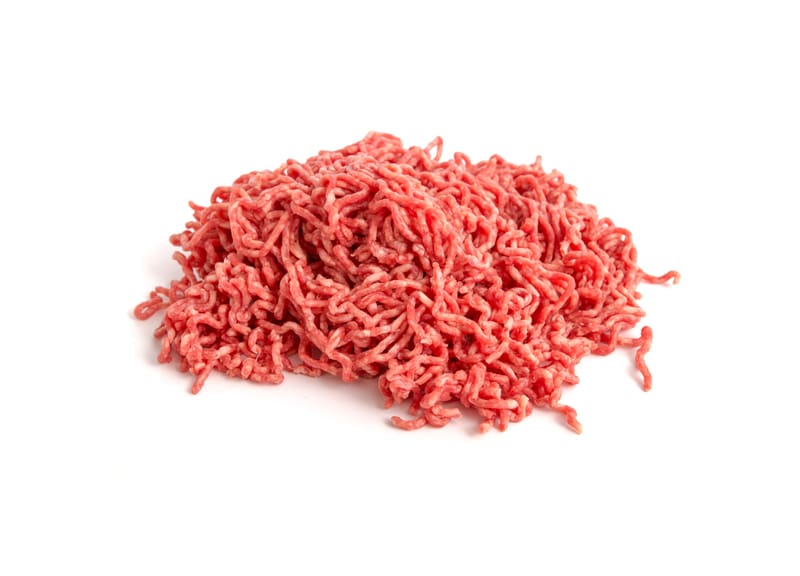


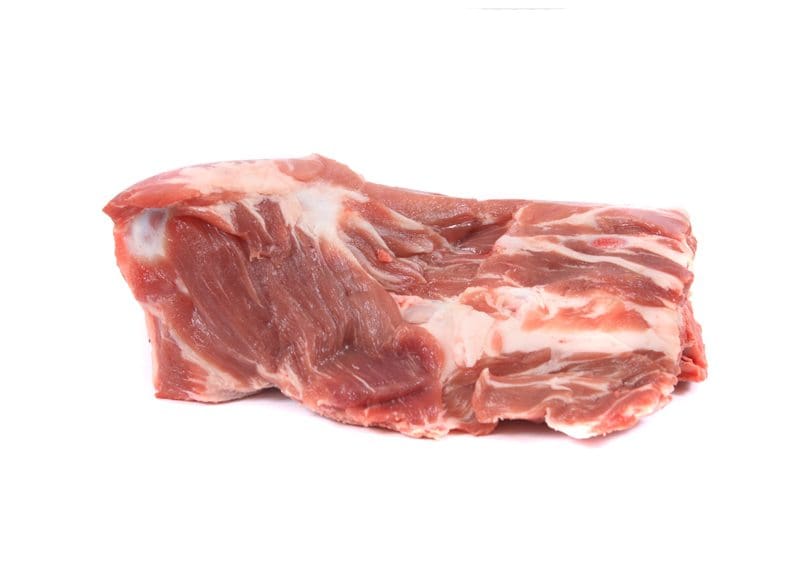
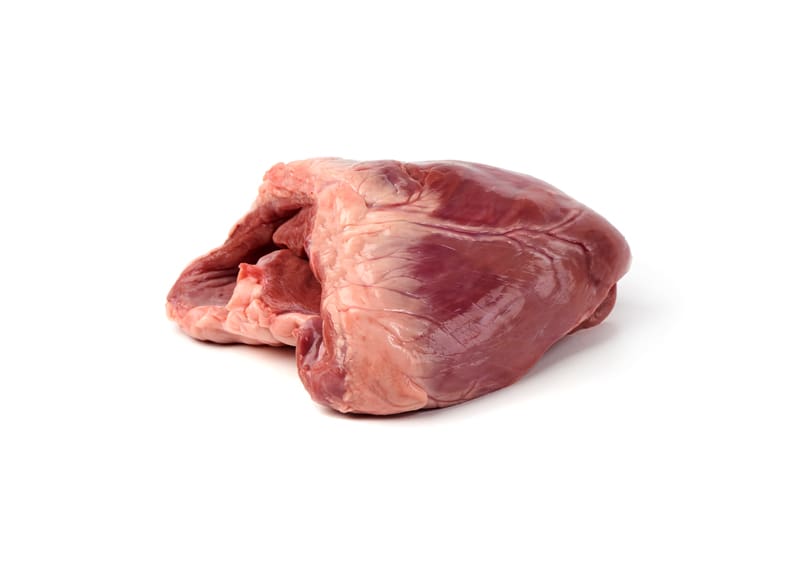
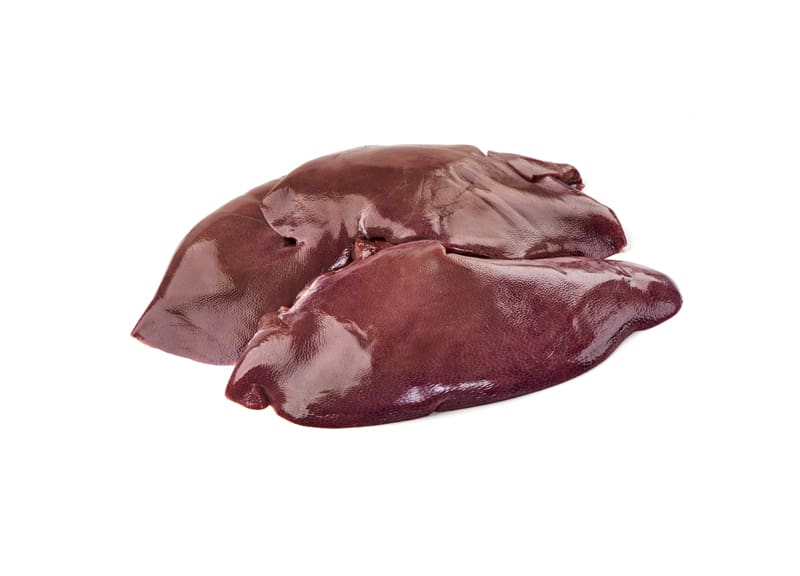
Carbohydrates
A low amount of net carbohydrates is required in a keto raw diet. Vegetables that are high in fiber, such as leafy greens, are beneficial for their phytonutrients and are low in net carbohydrates. Higher amounts of leafy greens are required to fulfill carbohydrate recommendations. Combining high-fiber vegetables with moderate-fiber vegetables is beneficial in these instances.

Broccoli
1oz (28g) = 10kcal
Fat: 0.10g
Protein: 0.80g
Net Carbohydrates: 1.18g
Fiber: 0.7g


Asparagus
1oz (28g) = 6kcal
Fat: 0.03g
Protein: 0.62g
Net Carbohydrates: 0.5g
Fiber: 0.6g

Spinach
1oz (28g) = 7kcal
Fat: 0.11g
Protein: 0.81g
Net Carbohydrates: 0.43g
Fiber: 0.6g

Professional Guidance Recommended
It is recommended to seek the guidance of a certified nutritionist when feeding any therapeutic diet for medical needs. The keto ingredients listed will not automatically create a ketogenic diet without careful calculations. Additionally, high fat diets can result in unexpected nutrient deficiencies that are beyond the well known nutritional gaps in raw diets. Hiring a nutritionist to provide guidance on balancing a ketogenic diet is ideal.
Therapeutic Custom Meal Plans & Therapeutic Phone Consultations
Learn more about our Therapeutic Custom Meal Plans for dogs and cats with medical conditions that require diet adjustments, or speak directly with our lead nutritionist, Ronny LeJeune, and receive 1 custom balanced recipe when you opt for our Therapeutic Phone Consultation.
CLOSING COMMENTS
A diagnosis of epilepsy or cancer is life changing. Feeding a keto diet can be beneficial as one component in the treatment protocol. In order to create a home prepared keto diet, the recommended amounts for calories, fat, protein, and carbohydrates need to be carefully calculated.
There are multiple components of a home prepared ketogenic diet that must be considered:
Epilepsy & Cancer
Ketogenic diets provide therapeutic benefits to improve the quality of life in pets with epilepsy and cancer.
Ketogenic Diet Overview
Ketosis is the metabolic state in which the body burns fatty acids as an energy source instead of glucose.
Keto Diet Selection
There are many forms of ketogenic diets but the most common are 1:1, 2:1, and 3:1.
Keto Ingredients
There are many fat and protein ingredients to use in a keto diet but it is important to focus on low glycemic vegetables in ketogenic diets.
Professional Guidance Recommended
Following the guidance of a certified pet nutritionist is strongly recommended to pet parents who choose to feed ketogenic diets to their pets
Although ketogenic diets provide therapeutic benefits to assist in ongoing treatment, they are not a cure for epilepsy or cancer. It is essential to work with a veterinary oncologist on a treatment plan when a pet is diagnosed with cancer. Additionally, ongoing medication for seizure control must be continued under the guidance of a veterinarian for pets with epilepsy.

